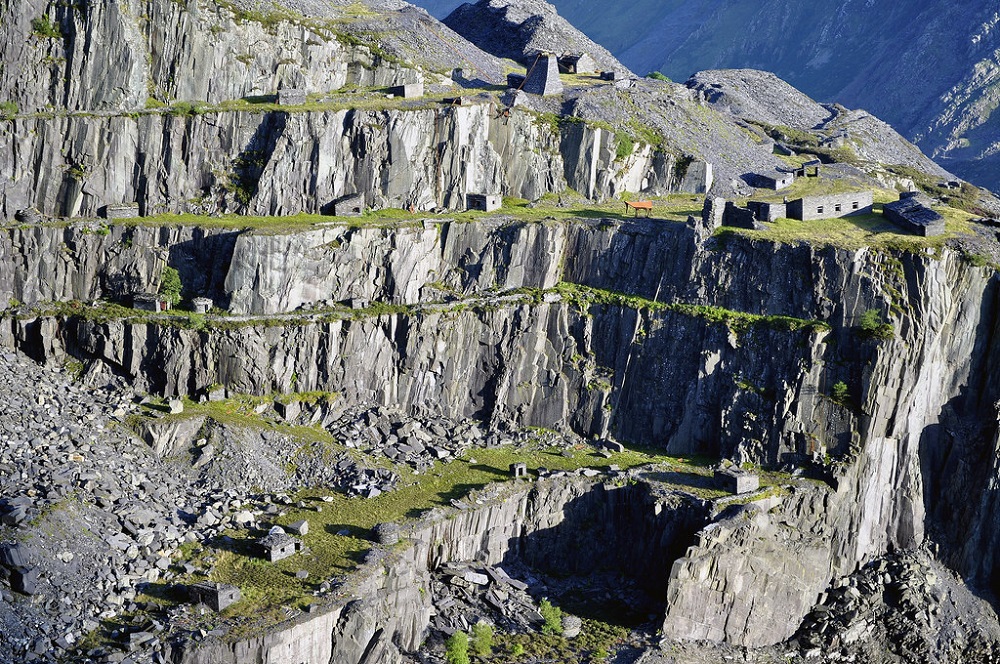Locals were sceptical about Wales slate landscape World Heritage bid, heritage consultant admits

Locals were sceptical about a bid for Wales’ slate landscape to become a World Heritage Site, a heritage consultant admitted.
When Dr Dafydd Gwyn first started telling people in 2009 that he was part of a new team spearheading a move to win the UNESCO status for the region, the response, he says, was often one of incredulity.
The area famed for its slate industry has now joined Egypt’s pyramids, India’s Taj Mahal and the Grand Canyon in being awarded the prestigious status.
Dr Gwyn told the Independent: “One challenge was persuading people that these very working-class communities – terrace houses in the shadow of industry – deserved this.
“The suggestion that these villages could be considered in the same breath as the Great Wall of China, you know, it was: ‘Bloody hell, what are you talking about?’”
According to Dr Gwyn the doubt was mainly down to one thing. “I think if you live with something all your life, you think it’s ordinary,” he says. “[I remember] a farmer being told that a quarry on his land was as unique as the Taj Mahal. I suspect that’s not something he ever expected to hear.”
He added that there was “much diplomacy needed” to convince businesses, in particular, that thestatus wouldn’t overly restrict development.
Some councillors were initially lukewarm about chasing a title that comes with no attached funding or explicit investment.
A team led by Gwynedd Council which included representatives from bodies such as the Snowdonia National Park Authority and the Wales Slate Partnership – put together a 472-page nomination dossier and 212-page future management plan, along with hundreds of supporting documents, which was finally submitted to the UN body in 2019.
‘Paperwork’
Roland Evans, assistant head of economy and community with Gwynedd Council said: “When the Lake District went through this process [in 2017], there was a quote that the paperwork weighed something in the region of 60 kilos.
“A lot of ours was done electronically but that gives an idea of the work involved.”
Evans says the project’s total budget was officially just £250,000 over almost 10 years. However, that figure does not take into account the amount of council working hours and resources that went into the bid.
Evans believes that time was well used because he says it has improved access to grants, new investment and will lead to sustainable tourist boom.
“What we want to create here is a legacy for future generations to prosper, and this is absolutely a step in that direction,” he says.
“We want our young people to continue living here and for there to be career prospects when they come out of college … and, already, we now have projects in the pipeline worth about £100m which have spun off from the work we have done on heritage over the last 10 or 12 years.”
An estimated £3.8m a year was pumped into the local economy in Cornwall after its tin mine landscape got World Heritage status in 2006.
Plaid Cymru MP Liz Saville-Roberts. “Of course money and time has been put into achieving this.
“But, if we play it to our strengths, the confidence and the opportunities that it will bring can be turned into real, long-lasting economic benefits for the whole region.”
Support our Nation today
For the price of a cup of coffee a month you can help us create an independent, not-for-profit, national news service for the people of Wales, by the people of Wales.





I’m afraid this rather blinkered/parochial viewpoint is something that afflicts many of our cyd-Gymry – could it be linked (at least in part) to our centuries’ old repression and suppression by our eastern neighbours? I only ask as this part of Cymru is in essence, my square mile, and my male relatives for generations gave blood, sweat and tears (aye, even their lives) in order “to roof the world”. Yet, when younger, I self-exiled for some five years to Paris, in order to teach Cymraeg (through the medium of French) and about Cymru to the inhabitants of that city, participating… Read more »
Yes very sad real.
I cannot accept that Corris, Corris Uchaf & Aberllefenni are not included. Very poor excuses from this end
We don’t know what the ordinary working class/peasant Chinese or Indian person think of the Great Wall or Taj Mahal,the working class of Gwynedd both hate the quarries and are inordinately proud of them,what other atittude can you have toward a monster that your ancestors created with their own blood and bone and it ten proceeded to crush them.I know,I am one of them.
On further reflection all the UNESCO projects in Wales with the exception,perhaps,of the Froncysyllte aqueduct do seem to have been rather hard on the Welsh working class or their C13 equivalent,although I am not suggesting that life in C18 Gwynedd or Gwent or even early medieval Wales was a bowl of cherries.